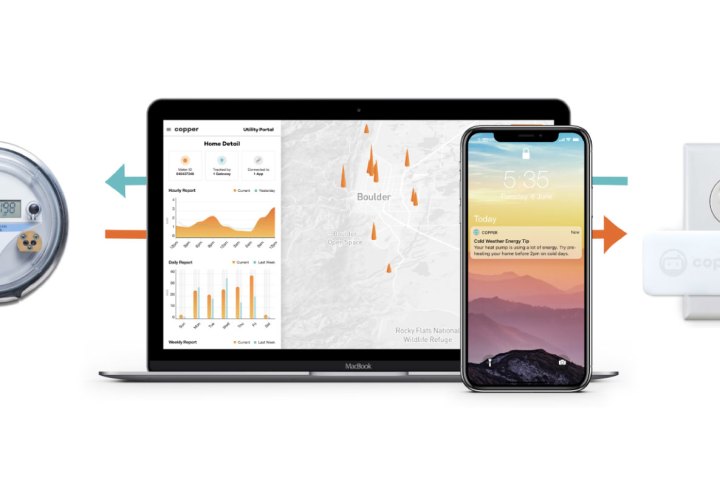Samsung’s SmartThings ecosystem is branching out today to include home energy monitoring.
The launch partners for this expansion include Copper Labs, which provides whole-home energy monitoring using wireless AC plug sensors. Copper Labs can also communicate back to service providers and help them optimize energy output during peak usage.
Eyedro, another fresh SmartThings partner, drills down into the power usage of major home appliances, including HVAC systems and water heaters. This provides real-time usage stats for voltage, wattage, power factor, and amperage through the web interface.
WattBuy is a platform that lets homeowners pick and choose their energy suppliers so they can get the best rates and take steps toward renewable energy. The only downside here is that WattBuy’s geography is limited to a handful of U.S. states for the time being.
The SmartThings family spans a wide range, and they aren’t solely Samsung products. The usual stuff like smart speakers and smart cameras are part of that picture, but air conditioners as well as smart washers and dryers, can have SmartThings connectivity as well. Support for the Matter protocol certainly helps SmartThings expand compatibility. Ultimately, SmartThings is pitching the convenience of being able to monitor and control all of these devices from within the same dashboard while also offering some interactivity between them.

The explosion of renewable energy hinges on adding intelligence at the home level, whether it’s using its own solar panels or relying on the grid. Solar and wind energy production varies, so being able to tap into when it’s available and properly budget your home’s electricity usage around that availability are going to become the new norm.
Samsung isn’t alone in making a play for this space. Google’s launch of Nest Renew, though fairly specific to the company’s thermostat for now, could easily spred to other connected Nest products and eventually any products that plug into Google Home.
It’s safe to expect that Samsung will woo more SmartThings partners in the future now that the stage is set. Samsung has already promised that it will have appliances in 2022 that support SmartThings Energy. You can visit the SmartThings Energy website to learn more.
Editors' Recommendations
- SimpliSafe is now using AI to prevent burglars from entering your home
- Echo Hub vs. Echo Show 8: Which is the best option for your smart home?
- What is IFTTT and how can you use it in your smart home?
- Nest Secure will be discontinued in April – prepare your smart home with these steps
- Daisy is an installation and repair company designed for your smart home




